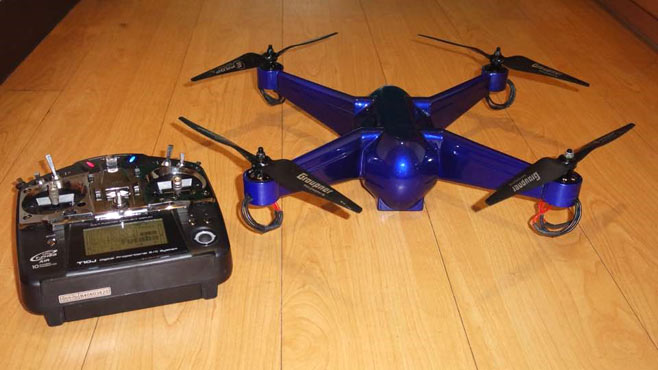Nanyang Technological University (NTU) researchers in Singapore have embedded electronics into a 3D printed drone. Using Stratasys’ 3D printers and the advanced ULTEM 9085 material Phillip Keane produced the device as part of the Singapore Center for 3D Printing (SC3DP) at NTU. The quadcopter, it has four propellers, with its impressive construction and embedded electronics is impressive, but still has some way to go to catch up with TERN, DARPA’s military drone currently under development.

Embedding the electronics into the drone in one process is significant since they would need to withstand the high temperatures associated with additive manufacturing. To do this electronics were modified in order to withstand high temperatures and then placed inside the print at different stages of the fabrication process. Temperatures during the print needed to be a minimum of 160°C for the advanced resin. Only the motor and propellers needed to be fitted following the 14 hour print with just three pauses required to embed electronics.

Speaking about the drone he designed, printed and later flew, Keane said:
One of the toughest challenges was to find electronic components that could theoretically survive the high temperature printing process – we had to add some heat-proofing modifications to the components to ensure they could last. This involved adding new components to the printed circuit boards and also designing custom housings.
Due to the material used in the print, an advanced resin made by Stratasys for the aerospace industry, the quadcopter is capable of supporting over 60kg of weight, although the motor would have to work work work hard to carry off famous singer Rihanna, who reportedly also weighs this much.
ULTEM while being very strong is also lightweight due to its good strength-to-weight ratio. Furthermore, because of the material choice this drone can withstand extreme temperatures unlike most commercial, non-3D printed drones. Speaking to Stratasys’s blog, Phillip Keane explained that a more advanced drone following in this one’s footsteps could potentially have application for fire-fighters or camera crews due to its heat resistance. Furthermore he stated that the process of embedding electronics in a lightweight 3D printed structure could also attract interest from the aerospace or motor-sport industries. In other drone related news, read about Local Motors’ flying sidekick for their 3D printed car.
Featured image of Phillip Keane and his drone next to the Stratasys printer. Photo via Nanyang Technological University.


